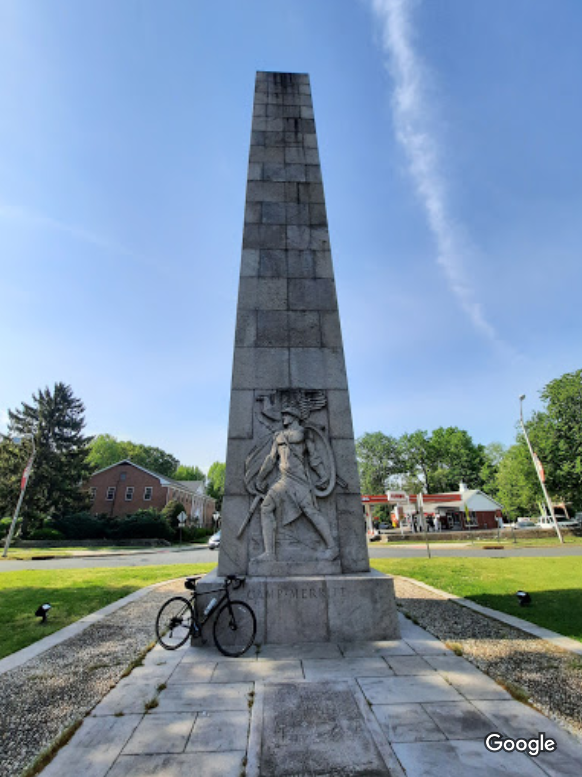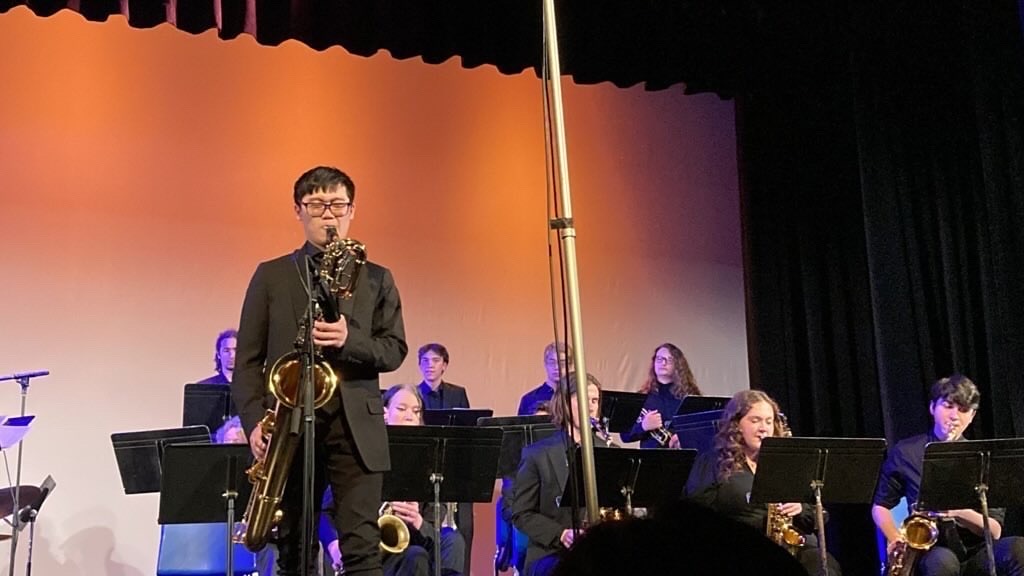Many people in Cresskill see the obelisk in the town’s circle as they pass by it every day. But few know much else about the historical structures in Cresskill. In this article, we will cover several structures, their backstories, and their fates.
First of all, the circle wasn’t always a circle! It used to be a four-way intersection until 1919 when Bergen County bought the land to make the monument. The obelisk was modeled after the Washington Monument. The relief of the soldier on the front was done by famed sculptor Robert Ingersoll Aitken. The monument was dedicated on May 30th, 1924, by General John “Black Jack” Pershing who led the American expeditionary force during World War One, as well as George S. Silzer, the governor of New Jersey, and Laura Williams Merritt, who was the widow of Major General Wesley Merritt. The entire area was excited about the new monument being installed–so excited that the crowd was said to be greater than 20,000!
The Peter Huyler house is another great example of a historic structure in Cresskill. It was built in 1776 by John G. Ackerson. When Ackerson was labeled a British sympathizer during the American Revolutionary War, his home was confiscated as enemy property by the State of New Jersey.
Unfortunately, the original house was badly damaged during a British raid on May 9th, 1779. The property was later sold to local militia Captain John Huyler in 1784. Huyler began to repair the house himself and then his son practically rebuilt the house including adding a wing to it. We know that he completed this new structure in 1836 due to the date being inscribed in stone above the front entrance door.
According to the Bergen County Stone House Survey, the house’s stonework was said to be “some of the finest stonework in Bergen County.”However, there is another beautiful historical house in Cresskill not far away from the Peter Huyler house called the Benjamin P. Westervelt house.
The Benjamin P. Westervelt is another original American colonial house. As Benjamin P. Westervelt’s family originally came from the Netherlands to New Jersey, he built his house in the Dutch Colonial style in 1778. As with the Peter Huyler house, a new wing was added later, in 1808. In contrast to the original occupant of the Peter Huyler House, Mr. Westervelt was never removed from his property by the American government because he fought in the Bergen County Militia. During a British raid, Mr. Westervelt was captured and imprisoned at the Sugar House Prison in occupied New York City. The details of his life after the war are limited, but he returned to his home and lived a long life of 81 years, dying in 1845. His descendants still own and live there to this day.
While these houses had a good ending, let’s take a look at less fortunate cases of historical houses in Cresskill. The Tallman House was built in 1858 and was the home of Egbert Tallman, who would later become Cresskill’s second mayor. After his passing, various residents lived in the Tallman house until it was bought by the town on April 30th, 2004, and served as a meeting place for various organizations in the town until it was fully dedicated to the Cresskill Historical Society. It has since fallen into disrepair and been victimized by vandals.
While the Tallman house is near the center of the town and can still be viewed in its dire condition, another house of historical interest was condemned and torn down completely!
There was once a house at 43 Merrifield Way in Cresskill. It was a mansion when it was built in 1908 and had all of the modern amenities. The house was quite stylish at the time, being in the Foursquare style. It was lived in by various residents of Cresskill until being lived in by biochemist Robert Bruce Merrifield. He won the Nobel Prize in Chemistry in 1984 for his invention of solid-phase peptide synthesis. It is extraordinary that he chose to live in our small town of Cresskill when he wasn’t working on his projects. Mr. Merrifield died in 2006 and his wife, Libby Merrifield, sold the house in 2011 to the town of Cresskill. After nine years of neglect, the now-dilapidated house was razed to the ground. The street itself is still named Merrifield Way today!
While the Merrifield house was torn down, the other historical structures in Cresskill will hopefully stand for centuries to come as the Camp Merritt Monument is a symbol of Cresskill. The Peter Huyler House and the Benjamin P. Westervelt House are historic sites in the State of New Jersey and great examples of historic architecture.












